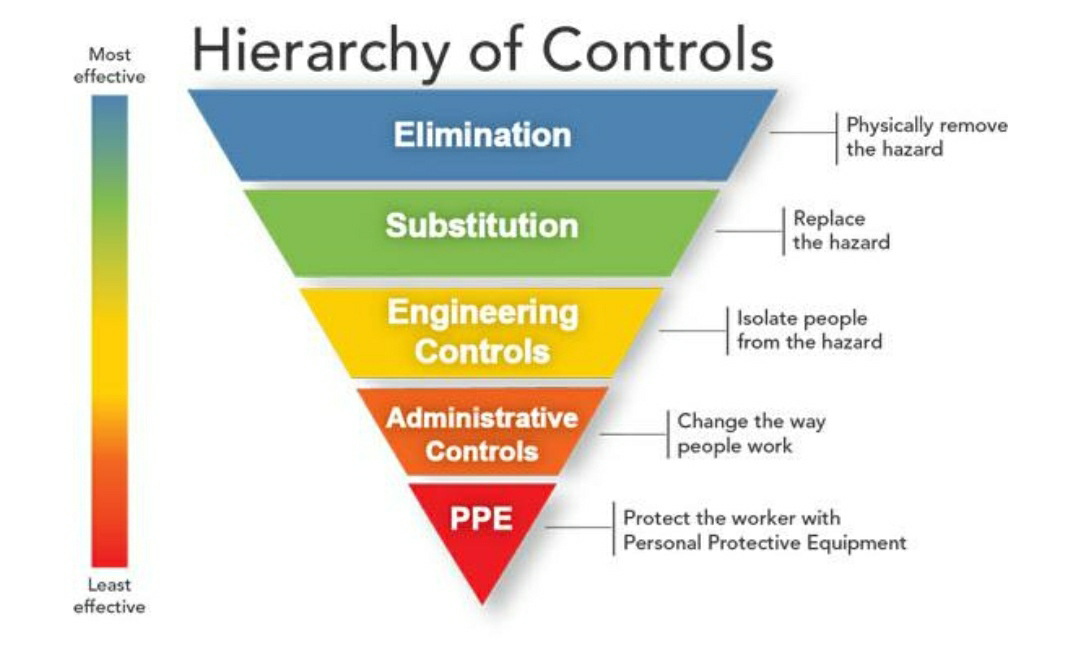Hazard Identification & Risk Assessment (HIRA)
What is HIRA?
HIRA, or Hazard Identification and Risk Assessment, is a systematic approach aimed at evaluating potential hazards and associated risks. In the context of safety, HIRA helps define objectives related to identified hazards and provides techniques for effective risk management.
What is a HIRA risk?
A HIRA risk involves a comprehensive process that includes hazard assessment, risk examination, and risk estimation. This method identifies potential hazards within a process or system that could lead to significant accidents, injuries, or environmental harm.
Upon identifying a hazard, the HIRA team evaluates both its severity and likelihood. Severity measures the potential consequences, such as the number of potential injuries or the intensity of potential damage. Likelihood assesses the probability of the hazard occurring.
The HIRA team then formulates recommendations to mitigate the risk. This may include eliminating the hazard entirely, reducing the likelihood of its occurrence, or minimizing the severity of potential consequences.
HIRA risks can be classified into different categories, such as:
1. Process Risks: These pertain to hazards inherent in the process, such as the potential for fire or explosion.
2. Equipment Risks: These involve hazards linked to the equipment utilized in the process, encompassing the risk of equipment failure.
3. Human Factors Risks: These are associated with the potential for human error, including the risk of mistakes made by workers.
Why HIRA is important?
Through risk identification and assessment, HIRA plays a crucial role in minimizing the probability and impact of significant accidents, injuries, and environmental harm. Its key functions include:
1. Identifying all potential factors posing harm to workers.
2. Determining incident probabilities and analyzing their potential severity.
3. Identifying and evaluating existing safeguards and controls.
4. Assessing safety risks to ensure they align with acceptable limits.
5. Providing recommendations to mitigate the likelihood of hazards.
HIRA and HAZOP
HIRA (Hazard Identification and Risk Assessment) and HAZOP (Hazard and Operability Study) are both integral techniques in process safety.
HIRA serves as a structured method for detecting and evaluating hazards within process facilities/systems, identifying potential risks leading to accidents, injuries, or environmental damage. It offers a simple yet effective approach applicable across various operations.
On the other hand, HAZOP takes a more comprehensive and rigorous stance. Utilizing guidewords, the HAZOP team identifies potential deviations from planned designs or operations, analyzes their severity and likelihood, and proposes mitigation solutions. Though more intricate and time-consuming than HIRA, HAZOP is thorough and effective.
Combining HIRA and HAZOP data allows for the development of a comprehensive risk management plan, encompassing hazard identification, risk analysis, and mitigation recommendations. This integrated approach enhances the safety of process facilities, mitigating the risk of major accidents, injuries, and environmental damage.
How many types of HIRA are there?
There are three types of risk assessments: Baseline Risk Assessments, Issue-Based Risk Assessments, and Continuous Risk Assessments.
Baseline Risk Assessments:
Conducted to identify risks for the first time, this assessment highlights specific aspects or issues. Regular reviews are essential to maintain an up-to-date baseline profile, reducing safety risks identified through HIRA in an organization.
Issue-Based Risk Assessments:
Triggered by highlighted aspects or issues, the Issue-Based Risk Assessment responds to factors like new processes, installation of machinery, or ongoing hazard assessments within an organization.
Continuous Risk Assessments:
Integrated into routine inspections and observations, continuous risk assessments are ongoing processes that contribute to the organization's risk management efforts.
What are the 3 Phases of HIRA ?
Phase 1: Identification of Hazards
During this stage, all potential incidents are meticulously identified and cataloged. A comprehensive approach involves field visits and a thorough examination of procedures related to operations. Input documents such as drawings and process write-ups are crucial in pinpointing hazards.
Phase 2: HIRA Risk Assessment
Inputs Required
The effectiveness of HIRA is closely tied to the availability and accuracy of input data. Complete input data enhances confidence in the validity and robustness of results. Data collection examples may include operational specifics, building design details, and personnel/population occupancy levels.
Risk Assessment Methodology
HIRA Risk Assessment serves as a critical tool for risk management and safety enhancement across various industries. Offering a quantitative evaluation of potential risks, it establishes a foundation for assessing process safety against predefined risk acceptance criteria.
The study method integrates identification, analysis, and brainstorming around identified hazards, structured into four main sections encompassing various categories:
1. Section 1: External and Environmental Hazards
2. Section 2: Facility Hazards
3. Section 3: Health Hazards
4. Section 4: Assessment of Risks to People, Assets/Production, and the Environment
Phase 3: Elimination of the Risk
Known hazards are listed and assessed within a risk matrix to determine their significance. Safeguarding controls/measures are outlined based on risk rankings, and recommendations are provided to prevent or eliminate potential hazards. The accompanying risk matrix is included in the study.
Hazard Likelihood rating
Hazard Severity Rating
Risk Matrix
Risk Rating
LSIR (Location specific Individual risk)
Location-Specific Individual Risk (LSIR) represents the risk for an imaginary individual situated at a specific location for 24 hours daily, 365 days a year. LSIR criteria play a pivotal role in shaping long-term industrial land use planning and development overviews. This individual risk is directly obtained from risk software, providing LSIR values expressed in the unit of Individual/Societal Risk Frequency per year.
What are the main 5 risk assessment stages?
1. Defining the scope of risk assessment.
2. Identifying the required resources.
3. Selecting the appropriate type of risk analysis measures.
4. Identifying key stakeholders involved.
5. Identifying relevant regulations or standards in accordance with organizational policies.










No comments:
Post a Comment